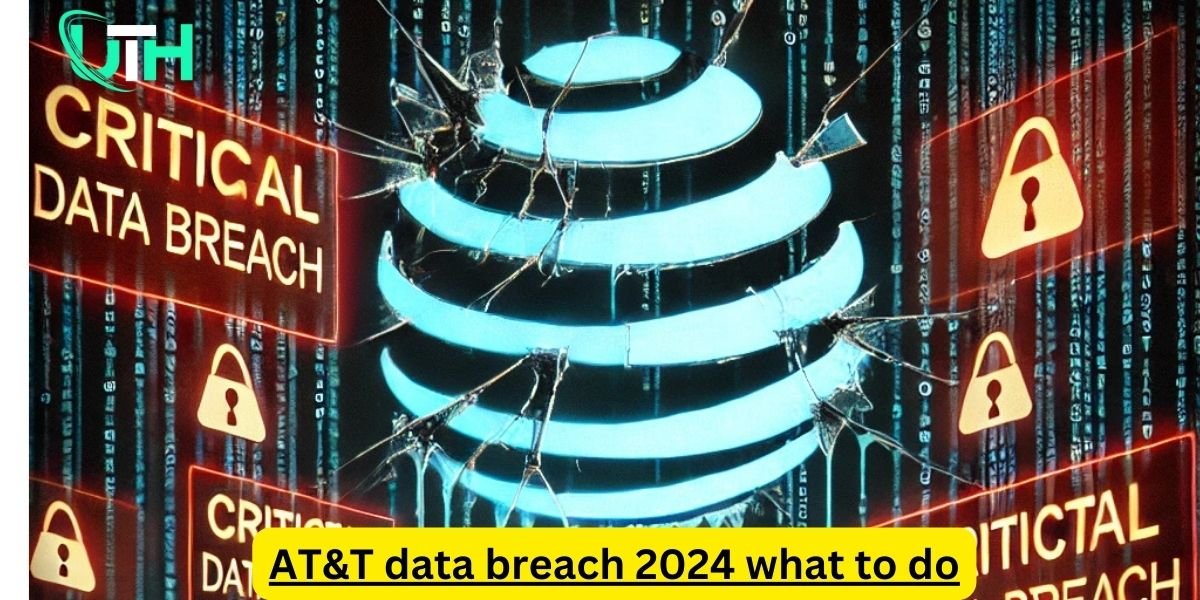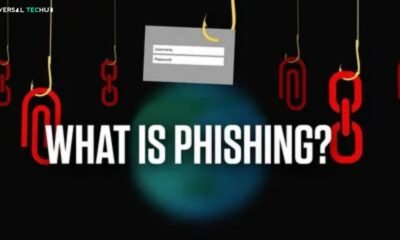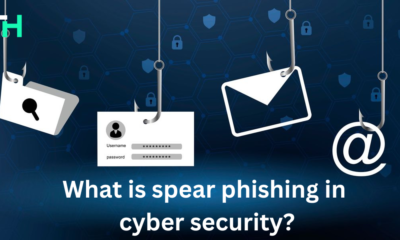Cybersecurity
AT&T Data Breach 2024 what To Do if your data is breached

Introduction
Data breaches are a disagreeable reality in today’s digital world. The anxiety and uncertainty, they cause can be overwhelming. Reports of a potential data breach at AT&T in 2024 have understandably raised concerns among current and former customers. However, This article is designed to provide you with actionable steps to take if you believe your information may have been exposed, as well as long-term strategies to protect data from future cyber attacks. We’ll cover everything about “AT&T data breach 2024 what to do”.
Understanding the Potential AT&T Data Breach
Several reports have emerged regarding a potential data breach affecting AT&T customers in 2024. It’s crucial to emphasize that while these reports are concerning, it’s essential to rely on official information from AT&T before concluding. The reported data breach, if confirmed, could involve unauthorized access to sensitive customer data. Anyhow, the investigation is ongoing, reports suggest a significant impact from the AT&T data breach, affecting both current and former customers. AT&T has identified customers with mobile service between May 1, 2022, and October 31, 2022, and certain accounts active on January 2, 2023, as being particularly vulnerable and should presume their data is compromised. The breach may also extend to users of mobile virtual network operators (MVNOs) utilizing AT&T’s network, such as Boost Mobile and Cricket Wireless (if confirmed). AT&T plans to notify affected customers directly via mail, text, or email.
The types of data potentially exposed in such a breach can vary, but typically include:
- Personal Information: Publically available information such as Names, addresses, phone numbers, email addresses, Social Security numbers, and dates of birth.
- Account Details: Bank account numbers, PINs, security codes, and billing information.
- Usage Data: Call logs, text messages, and data usage records.
Therefore, it’s important to stay informed about any official statements or updates released by AT&T. Their response will provide the most accurate details about the scope of the breach and the steps they are taking to address it. We will include links to any official AT&T resources as they become available. Furthermore, any confirmed legal investigations or lawsuits will be briefly mentioned, without offering legal advice.
Breaking News & Background
- The breach reportedly impacted approximately 7.6 million current AT&T accounts and a staggering 65.4 million former accounts, highlighting the long-lasting risk of personal data breaches even after service cancellation.
- The origin of the breach (internal or vendor-related) is still under investigation, emphasizing the complex security challenges faced by large organizations.
- AT&T has announced its intention to offer identity theft and credit monitoring services to affected customers, though details about eligibility and duration remain forthcoming.”
- The compromised data reportedly includes highly sensitive information: Social Security numbers, passwords, PINs, mailing addresses, phone numbers, dates of birth, and more. This breadth of exposed data underscores the potential for severe consequences for affected individuals.
Immediate Steps If You Suspect You’re Affected
If you suspect your information might have been involved in the potential AT&T data breach, taking immediate action is crucial. Here’s a step-by-step guide:
Check Your AT&T Account
Log in to your AT&T account immediately. Carefully check your account activity for any unauthorized changes, such as new devices added, changes to your plan, or suspicious activities. If you notice anything suspicious, contact AT&T customer service at once. Be prepared to provide verification information to confirm your identity.
Change Your Passwords
Change the password for your AT&T account, as well as other online accounts where you’re using the same password. Choose strong, unique, and complex passwords for each social account. A strong password should be at least 12 characters long and include a mix of uppercase and lowercase letters, numbers, and symbols. Never reuse the same password for multiple social accounts.
Enable Two-Factor Authentication (2FA)
Enable 2FA on your AT&T account and all other accounts as well that support it. 2FA adds an extra layer of security by requiring a second form of verification, such as a code sent to your phone, in addition to your password.
Monitor Your Credit Reports
Obtain free copies of your credit reports from each of the three major credit bureaus (Equifax, Experian, and TransUnion) at AnnualCreditReport.com. Review your reports carefully for any signs of unauthorized activity, such as new accounts opened in your name or unfamiliar inquiries.
Freeze Your Credit
Consider placing a credit freeze with each of the three credit bureaus. A credit freeze restricts access to your credit report, making it more difficult for identity thieves to open new accounts in your name. You can typically place a freeze online or by phone.
Place a Fraud Alert (Optional)
A fraud alert requires creditors to verify your identity before opening new accounts in your name. You can place a fraud alert by contacting any of the three credit bureaus.
Long-Term Protection Strategies
Protecting your personal information is an ongoing process. Here are some long-term strategies to minimize your risk:
Regularly Update Software
Keep your devices (computers, smartphones, tablets) and software (operating systems, apps) updated with the latest security patches. These updates often include fixes for security vulnerabilities that hackers can exploit.
Be Wary of Phishing Scams
Be extremely cautious of phishing emails, fake text messages, or phone calls that attempt to trick you into revealing personal information. Phishing scams often mimic legitimate organizations, such as AT&T, so be skeptical of any unsolicited requests for your information. Never click on links or open attachments from suspicious sources.
Use a Password Manager
A password manager can generate and store strong, unique passwords for all your social accounts for online safty. This eliminates the need to remember multiple passwords and reduces the risk of password reuse.
Consider Identity Theft Protection Services
While free credit monitoring is recommended, you might also consider paid identity theft protection services. These services typically offer additional features, such as credit monitoring, identity restoration assistance, and fraud alerts. However, carefully research different providers and compare their features and costs before subscribing.
Device Security
Secure your devices with strong passwords or biometric authentication. Install reputable antivirus and anti-malware software and keep it updated. Be cautious about downloading apps from untrusted sources.
Privacy Settings
Review and adjust the privacy settings on your social media accounts and other online platforms. Limit the amount of personal information you share online and be mindful of who can see your posts and profile.
Beware of Scams Related to the Breach
Be aware that scammers may try to take advantage of the reported AT&T data breach. Be wary of any phishing emails, calls, or text messages claiming to be from AT&T or other organizations offering assistance related to the breach. Never provide personal information to these unsolicited contacts.
Stay Informed
Stay informed about cybersecurity best practices and data breach news. Follow reputable cybersecurity websites and blogs to stay up-to-date on the latest threats and protection strategies.
Reporting and Further Resources
If you believe you have been a victim of identity theft or if you have information about the AT&T data breach, you can report it to the following organizations:
- AT&T: Contact AT&T customer service immediately if you suspect any unauthorized activity on your account. You can find their contact information on the AT&T website.
- Federal Trade Commission (FTC): The FTC is the primary federal agency responsible for protecting consumers from identity theft. You can report identity theft or a data breach to the FTC online at IdentityTheft.gov. The FTC website also provides valuable resources and information about identity theft prevention and recovery.
- State Attorney General: Your state attorney general may also be able to assist you with identity theft or data breach issues. You can find contact information for your state attorney general’s office online.
- Credit Bureaus: Contact the three major credit bureaus (Equifax, Experian, and TransUnion) to place a fraud alert or credit freeze on your credit report.
Conclusion
Data breaches are a serious concern, but by taking proactive steps, you can significantly reduce your risk and protect your personal information. Stay informed, be vigilant, and don’t hesitate to take action if you suspect your information has been compromised. Remember, you are not alone in this.
Source: KHOU 11
Frequently Asked Questions (FAQ)
Here are some frequently asked questions related to data breaches and the reported AT&T incident:
What is AT&T doing to address this?
We are currently awaiting an official statement from AT&T regarding the reported breach. Once available, we will include information about their response and actions taken.
Am I entitled to any compensation?
Whether or not you are entitled to compensation will depend on the specifics of the breach and any legal actions that may be taken. Consulting with an attorney is recommended if you have suffered financial losses as a result of the breach. We are not providing legal advice.
How long should I monitor my credit?
It is a good practice to monitor your credit reports regularly, even if you are not aware of any data breaches.
What if I’m a former AT&T customer?
Former AT&T customers may also be affected by a data breach. Follow the same steps outlined in this article, including checking your credit reports and monitoring for any signs of identity theft.
-

 Phishing attack8 months ago
Phishing attack8 months agoWhat is Spear Phishing and How You Can Identify This Scam?
-

 Social engineering attack10 months ago
Social engineering attack10 months agoBaiting Attacks Explained: A Closer Look at Cyber Threat Tactics
-

 Social engineering attack8 months ago
Social engineering attack8 months agoWhat are Social Engineering Attacks – A Complete Guide to Cyberattacks Prevention
-

 Social engineering attack9 months ago
Social engineering attack9 months agoSpear Phishing Attack: A Targeted Cyber Threat
-

 Social engineering attack10 months ago
Social engineering attack10 months agoWhat is spear phishing attack? A detailed guide
-

 Phishing attack4 months ago
Phishing attack4 months agoWhy is Phishing Still a Major Cyber Threat? Everything You Need to Know
-

 Social engineering attack10 months ago
Social engineering attack10 months agoWhat is spear phishing in cyber security?
-

 Phishing attack8 months ago
Phishing attack8 months agoWhat Are Phishing Emails? A guide for you




















